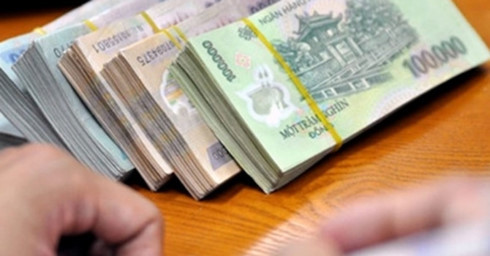 |
|
VND is forecast to weaken only slightly during the remaining months of 2019, with the 2019 average predicted to slide to VND23,300/USD.
|
Broad stability to continue
Fitch Solutions, a macro-research entity under Fitch Group, has revised its forecast based on three factors. Firstly, foreign direct investment (FDI) inflows are expected to remain strong throughout 2019. The research entity believes that businesses with supply chains heavily concentrated in China are likely to continue diversifying their supply chains across the rest of Asia, although ongoing US-China trade tensions are unlikely to dissipate anytime in the near future.
Vietnam will continue to benefit from the shift in supply chains due to its investment attraction and trade friendly policies and low costs, coupled with young, and large labour force. In addition to FDI in the manufacturing sector as a result of the supply chain shift, a relatively strong economic growth outlook, in which Fitch Solutions forecast real GDP to grow by 6.5 per cent in 2019, should continue to make the country attractive to real estate and retail FDI.
Secondly, Vietnamese banks are striving to achieve a minimum capital adequacy ratio (CAR) of 8.0 per cent, calculated under Basel II standards, by January 2020. The central bank’s statistics show that on aggregate, banks currently have a CAR above the minimum. Hence, Fitch Solutions highlighted that the calculation under the current framework only accounts for credit risk, and not market and operational risk. As such, the CAR of Vietnamese banks are at risk of coming in significantly below the 8.0 per cent minimum if Basel II standards are applied.
Given that capital markets are still relatively underdeveloped in Vietnam, and most banks will require a combination of additional capital injections from foreign partner banks and foreign bond issuances in order to raise capital to meet the 8.0 per cent CAR requirement. This will likely support strong capital inflows for the remainder of 2019.
Thirdly, with a foreign reserve position at USD67.4 billion in May, representing 3.3 months of import cover, the State Bank of Vietnam (SBV) is believed to have sufficient foreign exchange reserves to continue its course of active intervention to ensure currency stability if necessary. This suggests that VND is likely to see minimal volatility over the coming months.
In a six-to-24 month outlook, VND is expected to undergo a gradual depreciatory trend against USD due to higher inflation in Vietnam versus the US and the overvaluation of VND. Fitch Solutions forecast the unit to average VND23,475/USD in 2020, revised from VND23,850/USD previously, which is slightly weaker versus its 2019 forecast.
The research unit forecast inflation in Vietnam to average 3.10 per cent over 2019 and 2020, above its 2.15 per cent average forecast for the US. With upside inflationary pressures, Vietnam will likely stem from higher livestock prices on the back of the ongoing spread of the African swine fever and high demand for building materials triggered by a strong pipeline of both public and private sector projects which should support inflation in the ‘housing and construction materials’ category.
Brent Oil prices are forecast to average USD70.00/barrel in 2019, 2.4 per cent lower than the 2018 average of USD71.70/barrel. The price decrease contrasts sharply with the 30.9 per cent average increase in oil prices in 2018 over 2017. Therefore, transport inflation is likely to remain subdued for the remainder of the year, which should cap overall inflation.
Additionally, the VND’s real effective exchange rate (REER) is trading 9.0 per cent above its 10-year average, which suggests currency overvaluation, although some of the strength in the REER could be attributed to productivity gains.
Accordingly, higher structural inflation in Vietnam and its excessive currency strength could diminish the country’s export competitiveness over the long run, which would weigh on its economic growth given that exports represent 95.4 per cent of GDP. This underpins Fitch Solutions’ view for the central bank to leverage a gradual weakening of VND.
Risks to the currency forecast are weighted towards VND weakness. The central bank could intervene to weaken VND by more than which the research entity expects to maintain Vietnam’s export competitiveness amid the ongoing wave of global monetary easing.
Slowing global growth, trade uncertainty, and disruptions to global value chains could also adversely impact Vietnam’s exports, pressuring the central bank to weaken VND further.
VOV
 The Vietnamese dong (VND) will weaken only slightly during the remaining months of 2019, with the 2019 average predicted to slide to VND23,300/USD, from the previous forecast of VND23,440/USD.
The Vietnamese dong (VND) will weaken only slightly during the remaining months of 2019, with the 2019 average predicted to slide to VND23,300/USD, from the previous forecast of VND23,440/USD.